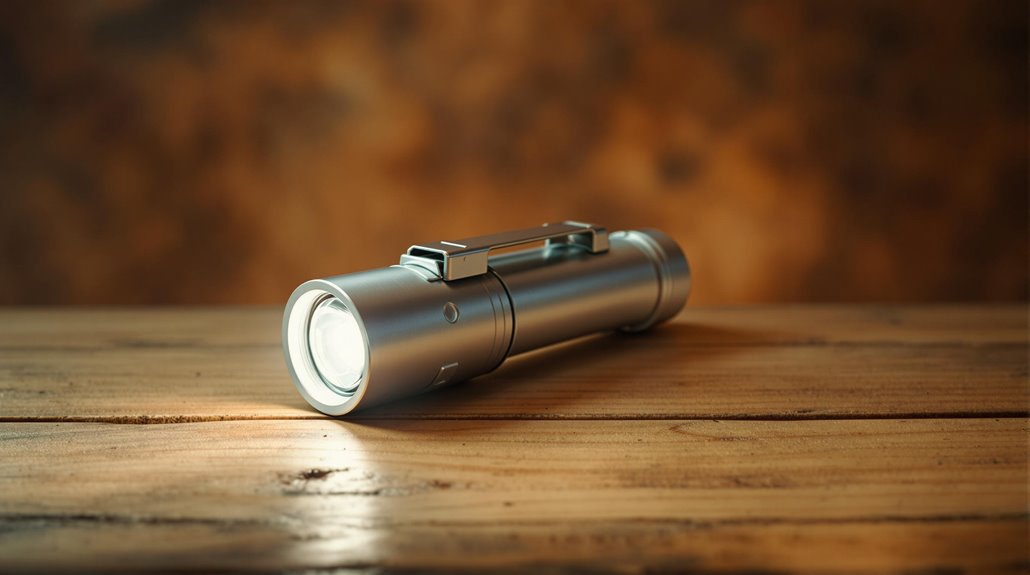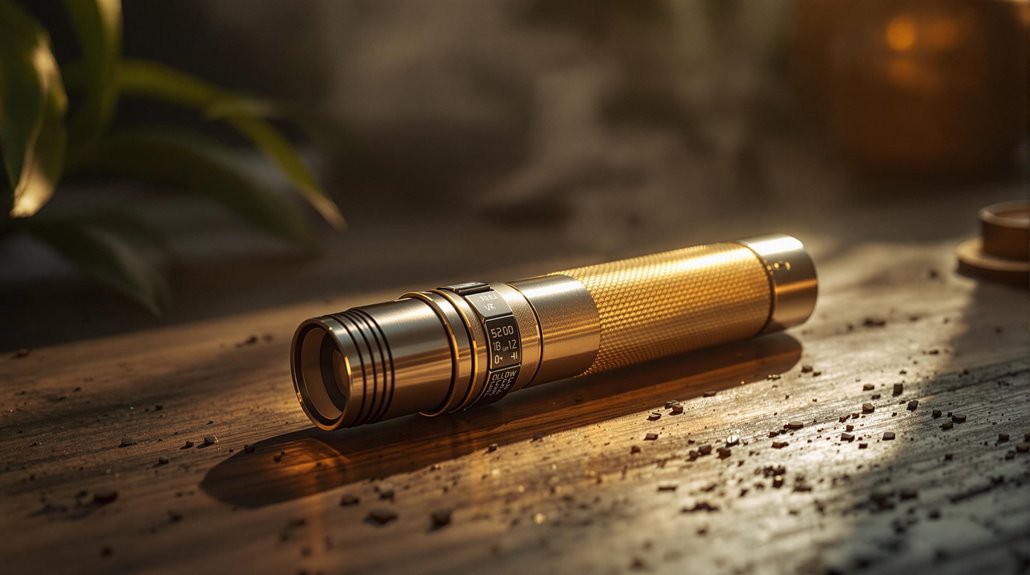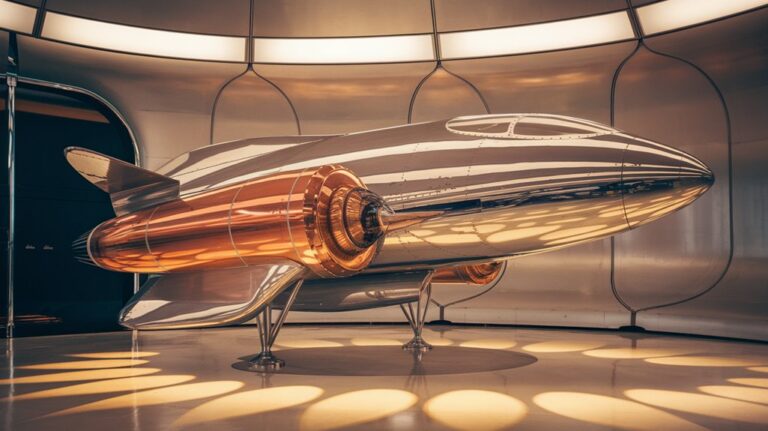Ann Makosinski’s Hollow Flashlight: A Science Fair Entry That Went Viral
You might wonder if a teenager's science fair project could genuinely revolutionize how we think about sustainable energy. When Ann Makosinski created her Hollow Flashlight from $26 worth of parts, she wasn't just solving her friend's homework problems in the Philippines—she was challenging our dependence on traditional power sources. Her ingenious use of body heat to power LED lights has sparked an essential conversation about the untapped potential of thermal energy in our everyday lives.
The Spark Behind the Hollow Flashlight
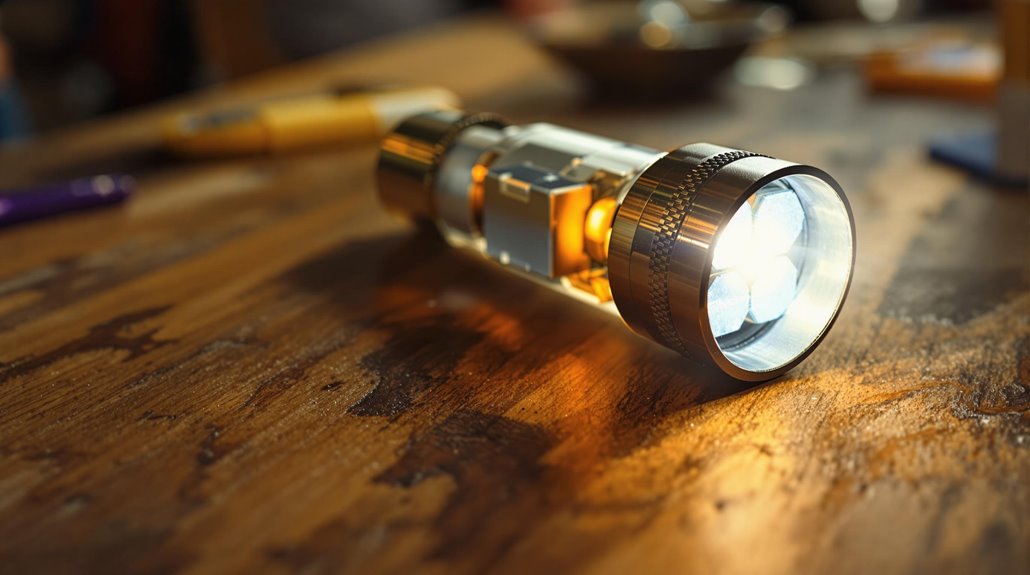
While many teenagers spend their free time on social media, Ann Makosinski channeled her lifelong passion for electronics into solving a real-world problem.
Her inspiration sources emerged from a personal connection – a friend in the Philippines who couldn't study at night due to lack of electricity.
Makosinski's innovative thinking drew from her understanding of the human body's untapped energy potential. Knowing that humans generate heat like "100-watt walking light bulbs," she saw an opportunity to harness this surplus energy. She developed a groundbreaking design using Peltier tiles to convert thermal energy into electricity.
Her early exposure to electronics, which began at age two, combined with years of creating inventions from household items and participating in science fairs, prepared her for this challenge. She preferred electronic components over traditional toys from an early age.
She set out to create a flashlight that would run solely on body heat, potentially helping millions without access to reliable power sources.
How Body Heat Powers This Revolutionary Device
Although the concept seems like science fiction, the Hollow Flashlight harnesses a remarkably simple principle called the thermoelectric effect to convert body heat into light.
When you place your palm on the device's opening, your hand radiates heat energy that warms one side of the Peltier tiles mounted inside the aluminum tube. Meanwhile, ambient air flowing through the hollow tube cools the opposite side, creating the temperature difference needed for energy conversion. The lightweight design uses PVC pipe housing for durability and portability.
You'll get the brightest light when there's at least a 5°C difference between the two sides. The device's four Peltier tiles transform this temperature differential into electricity, which a voltage booster amplifies to power the LED.
It's surprisingly efficient, converting about 50% of your body heat into usable energy that keeps the light glowing for over 20 minutes. The invention provides a sustainable alternative to traditional lighting methods for over 1 billion people who currently lack access to electricity.
Building a $26 Prototype That Changed Lives
Armed with just $26 worth of materials from eBay and local suppliers, Ann Makosinski assembled her groundbreaking Hollow Flashlight prototype using simple components: Peltier tiles, an aluminum tube, PVC pipe, and an LED light.
She mounted the Peltier tiles on the aluminum tube, which she then inserted into the PVC pipe, creating a hollow design that maximized airflow for cooling.
The prototype's efficiency exceeded expectations, generating 5.4 mW of power at five foot candles brightness and maintaining steady light for over 20 minutes.
Her innovative design earned her a spot as a Google Science Fair finalist in 2013, competing against thousands of other young inventors.
It performed best in colder temperatures and required only a 5°C temperature difference to function.
She created two working models, one using aluminum and another using PVC, both proving equally effective at generating light.
While $26 might seem steep for a flashlight, mass production would dramatically reduce costs.
This patent-pending invention shows particular promise for developing countries, where it could provide reliable, battery-free lighting to communities in need.
From Science Fair to Global Recognition
Starting with her early science fair entries at age 11, Ann Makosinski's journey from local competitions to international acclaim showcases her remarkable evolution as an inventor.
Her innovative inventions at science fairs caught global attention, particularly at the 2013 Google Science Fair, where she emerged as the sole Canadian finalist among thousands of entries. Her exceptional hand-powered flashlight design demonstrated her commitment to solving real-world energy challenges. Her flashlight was inspired by her desire to help students in the Philippines without electricity.
Her achievements include:
- Winning first place in the 15-16 age category at Google Science Fair
- Being featured in Time magazine's 30 under 30
- Delivering three TEDx talks about her inventions
You'll find her influence extends beyond competitions, as she's appeared on The Tonight Show with Jimmy Fallon and received recognition from National Geographic.
Her success led to the Sustainable Entrepreneurship Award of Excellence in 2015, proving that dedication to innovation can spark worldwide recognition.
The Future Impact of Thermal Energy Harvesting
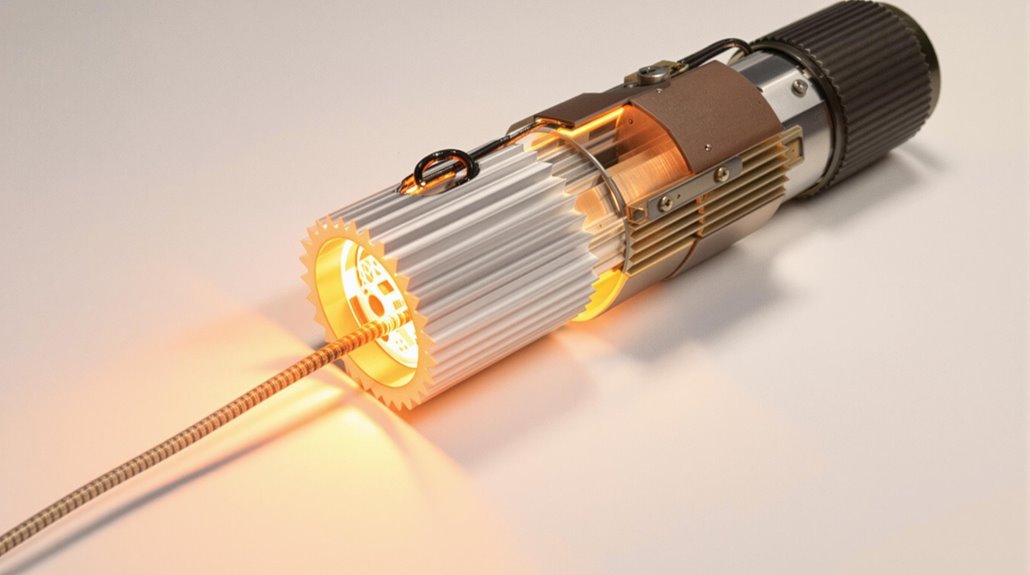
While Ann Makosinski's hollow flashlight paved the way for thermal energy harvesting, the technology's future impact extends far beyond handheld devices.
The innovative device demonstrated that even a few millivolts could power useful lighting applications. You'll soon see this innovation transforming everything from medical wearables to industrial sensors, all powered by the heat that's naturally present around us.
The push for energy sustainability is driving rapid advancements in thermal efficiency, with new materials and flexible designs making these systems more practical than ever. Modern thermoelectric generators can achieve impressive ZT values of 5-6, representing significant improvements in energy conversion efficiency.
You'll find these technologies reducing battery waste and cutting maintenance costs across industries. The economic potential is significant, with market growth projected at 9.8% annually through 2025.
From powering IoT devices with your body heat to capturing waste energy from engines, thermal harvesting is set to revolutionize how we think about sustainable power generation.

